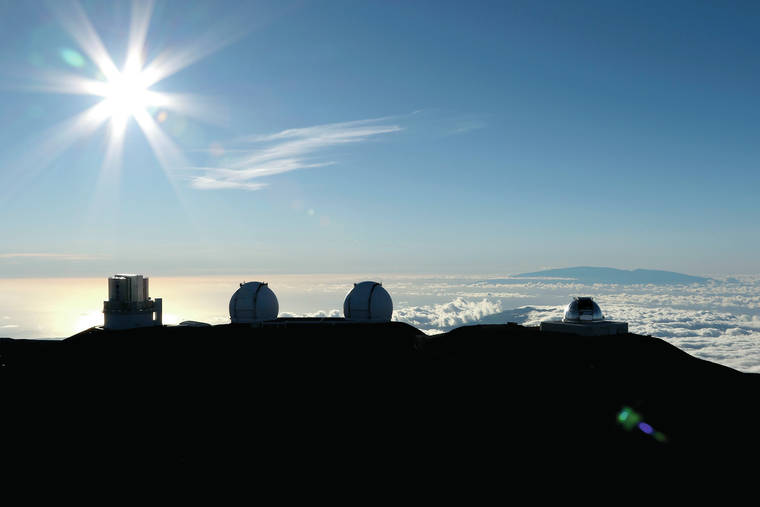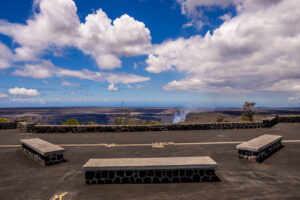After being grounded for four weeks, Maunakea Observatories announced Friday that astronomers will return to the summit and telescopes will resume observations.
Observatory spokespeople announced that astronomers and technicians will begin work on restoring the summit telescopes to full operations with the blessing of the state and Thirty Meter Telescope opponents.
Demonstrators occupying the roadway since July 16 had permitted astronomers back up the mountain last week after Gov. David Ige rescinded an emergency proclamation he issued regarding the protests. However, safety issues prevented the observatories from authorizing a full return to service.
Since the closure of Maunakea Access Road, technicians and other staff attempting to reach the mountain have had to use an unpaved side path connecting Daniel K. Inouye Highway to a point on the access road beyond where demonstrators set up camp. That path was unmarked, ran directly over the lava rock and was surrounded by parked vehicles, tents and pedestrians, and appeared unsafe for extensive use.
However, on Wednesday state agents delineated the path with traffic cones and laid cinder along its stretch to mitigate the safety concerns.
“Now we feel more comfortable to start,” said Jessica Dempsey, deputy director of the East Asian Observatory. “Especially now that we have assurances from the state.”
Ige made a statement Friday regarding the new development.
“The Maunakea Observatories represent an invaluable sector for Hawaii Island and our entire state — the economic impact, intellectual capital, educational resources and community support they provide is irreplaceable,” the governor said. “The interim solution for access to the telescopes is a step forward but remains inadequate for the long term. The state remains committed to re-opening the Maunakea Access Road intersection as an immediate priority. The state stands behind the more than 500 employees’ efforts to bring the telescopes back online to begin astronomical observations again.”
Dempsey said some observatories will be able to return to full operations quickly, while others could take weeks. East Asian Observatory staff intend to begin the process Monday and ideally restore some instruments to functionality within several days.
“The Maunakea Observatories thank the state and county for their statements of support for a continued vibrant astronomy sector in Hawaii,” said Hilton Lewis, director of the W. M. Keck Observatory, in a statement. “We are deeply committed to our community here on Hawaii Island and are eager to get back to work at our telescopes as soon as possible, to resume the world-leading astronomy for which Hawaii is renowned.”
Protest leader Kahookahi Kanuha said staff will continue to be treated “with aloha,” although fellow leader Lanakila Mangauil pointed out that astronomers have been allowed to ascend the mountain for more than a week.
Email Michael Brestovansky at mbrestovansky@hawaiitribune-herald.com.




